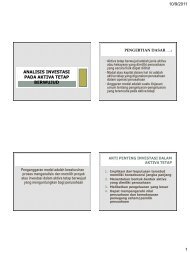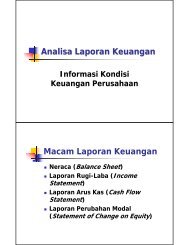Investor Relations
Investor Relations
Investor Relations
- No tags were found...
You also want an ePaper? Increase the reach of your titles
YUMPU automatically turns print PDFs into web optimized ePapers that Google loves.
IMPLEMENTING BEST PRACTICES IN INVESTOR RELATIONS 155All crisis management manuals will say that nothing can help more in theevent of a crisis than proper planning. While this book certainly does notclaim to be exhaustive about crisis management techniques, it aims at providingsome useful hints for a professional handling of <strong>Investor</strong> <strong>Relations</strong>under such circumstances.Bad news do happen, and financial markets are used to it, but if there isone thing they do not like, it is surprises.Crises have consequences, some of which areimmediately after they are announced; for instance, the share price willadjust or could collapse dramatically;longer term, this will affect the market-risk premium assigned to thecompany, making its financing more costly.Yet the media and the potentially negative news coverage, the financialmarkets, and the likely hit to the stock prices are, by far, not the onlystakeholders to target. While engaging in a genuine dialogue with theirown target audiences, <strong>Investor</strong> <strong>Relations</strong> should see to it that the stakeholdersthat are most directly affected by the crisis be prioritized: Fromthe very beginning of any crisis, management should think ahead to thefuture of the organization. Unless it is disaster that may result in propertydamage and/or casualties, the news media should be a secondaryconsideration.3.8.1 Anticipating, Just in Case ...Knowing that it is never too late to mend, top management will have to domore than put in place alert systems, crisis management teams, and procedures.Their work will also involve looking beyond the crisis to see how itcan help the company learn and grow from the experience.All of this implies that efforts have been made well in advance, at thehighest levels, to identify potential risks, occurrence probabilities, andtheir potential impact on the company’s future. This is actually part ofstrategic planning insofar as it forces companies to identify their mostvital and vulnerable areas and to create alert signals. The value of systematicallyinvesting in quality information systems cannot be emphasizedenough. These systems should reflect the reality of companies’ operations,obligations incorporated in their bylaws, and the expectations offinancial markets.Even the best efforts can fall short however, if the company has notstrived over time to build a strong relationship with financial markets that isbased on credibility, trust, transparency, and consistency. Markets typically











